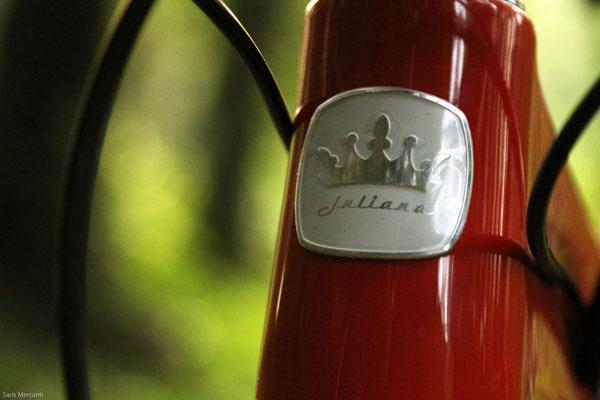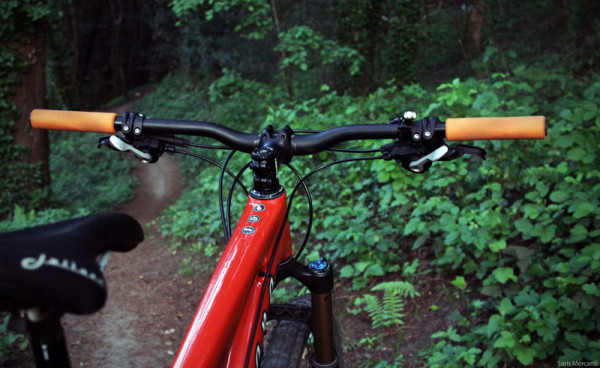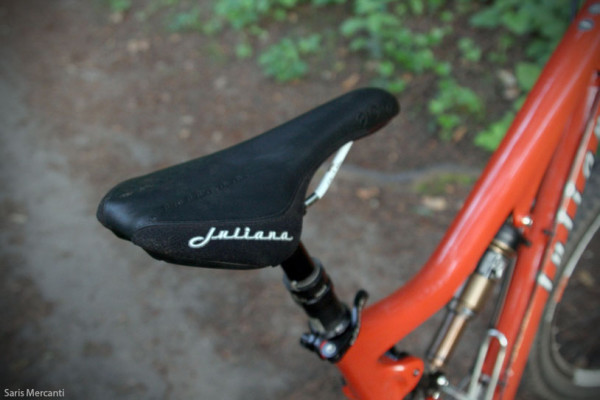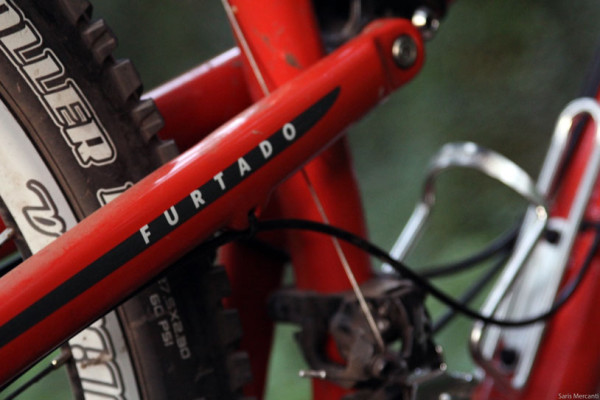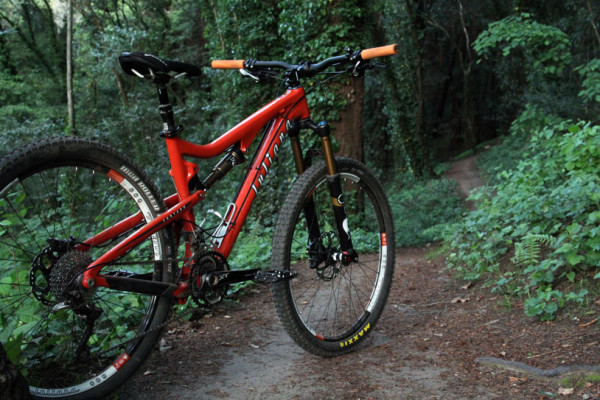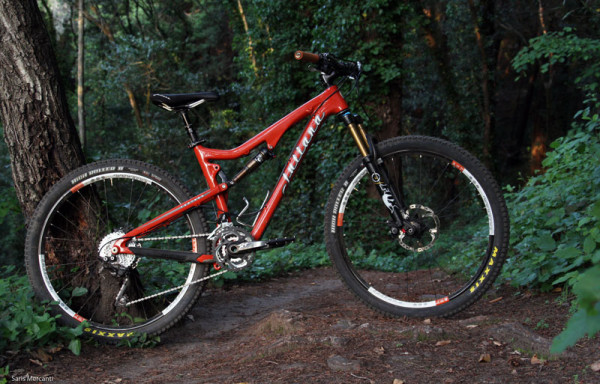
Mountain Biking derailed my chance of a normal career. It is my obsession and sometimes it feels as if my life is really just ribbons of single track strung together by the ordinary moments known as daily life.
The majority of you reading this likely share that same obsession, but according to our web analytics, probably don’t have a second X chromosome. Yet according to recent studies, women are the largest potential growth area for the cycling market, and recently manufacturers have begun to take notice.
First amongst these brands is Juliana Bicycles, which is named after the legendary racer Juliana Furtado. These bikes share the same platform as Santa Cruz, but are differentiated by smaller bars, a ladies saddle, and a distinct paint job…Which is why this is the most difficult review I have ever written.
To paraphrase the Bard, a Furtado by any other name would be a Santa Cruz Solo 5010. From this exceptional starting point, the Juliana brand has modified the bike to be “women’s specific” by adding the aformentioned bars, saddle, and iconography.
Rather than focusing on the subtle physical nuances that differentiate our torso or femur length from men, the brand focused on these specific contact points to ensure a better out of the box fit for women.
Now, a quick bit of clarification on this model’s name since the personality behind it is Juliana Furtado. This is the Juliana brand’s Furtado model, much as the Toyota brand has a Camry model. The Premiero is the trim level, but that naming scheme has since been simplified to something like XT, X01, or similar to denote the majority of the build. The bike tested here was an early model, hence the name and some spec choices noted below.
In their first year of production, all Juliana Bicycles came equipped with a compact 680mm bar, that tapered to a smaller than standard diameter at the grip.
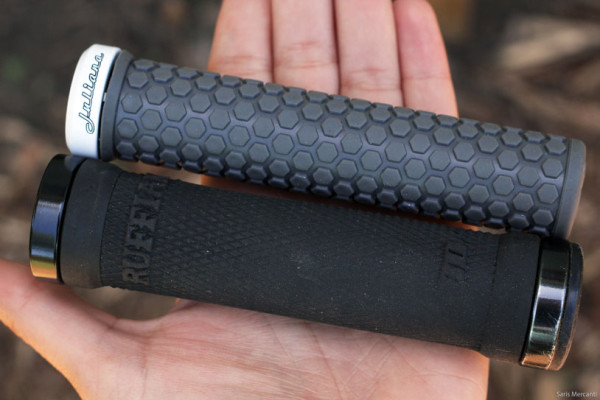
This allowed the complete builds to be equipped with a smaller that average grip. Many smaller women I spoke with claimed that this grip helped reduce arm pump, but at 5’7, I found them to be a touch too small.
On newer models, the extra small sizes continue to ship with the compact bar and grip, but the larger sizes come equipped with standard grips.
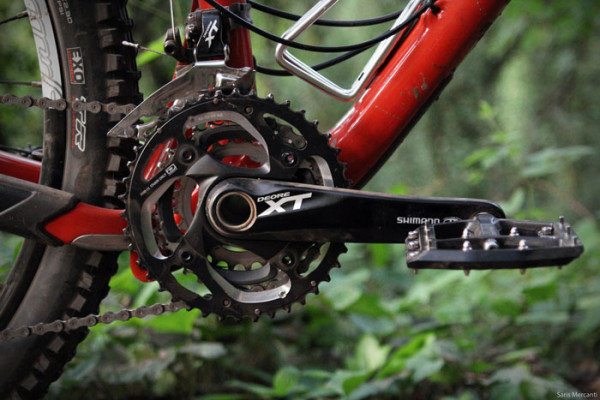
All of the first year Juliana models came equipped with a triple. Despite the fact that sister company Santa Cruz Bikes was largely responsible for popularizing the ten thousand dollar mountain bike, the same high end kit (XTR/XX1, etc..) was not available on the women’s models for nearly a year, until the Roubion was announced.
Our review bike came with a full XT group set and was considered the flagship model when it was introduced. As spec’d, I had issues with the chain derailing on prolonged descents, and would have preferred either a 1x or double.
(Editor’s Note: As a group here, we tend to think triple’s aren’t the right choices for either performance bikes or kids bikes due to the rare-if-ever use of the largest ring and the added weight and complexity they add. Fortunately, all current models of the Furtado now ship with 1x or 2x drivetrains.)
One of the custom items developed specifically for by the brand is the Primiero saddle. It’s a little wider than a traditional unisex model, has a central channel for the lady parts, and a “flex tuned shell” with Kevlar reinforced sides.
I can’t quite compare it to being swaddled in the leather seats of a luxury European sedan, but it is fairly comfortable for a performance bike saddle.
This Juliana rolls on custom stickered WTB i23 rims laced to DT hubs, which are wrapped front and rear with meaty Maxxis HighRoller II tires. Those tires are rad on the descents, but felt a little sluggish uphill. A worthy tradeoff? It all depends on your riding style.
On The Trail
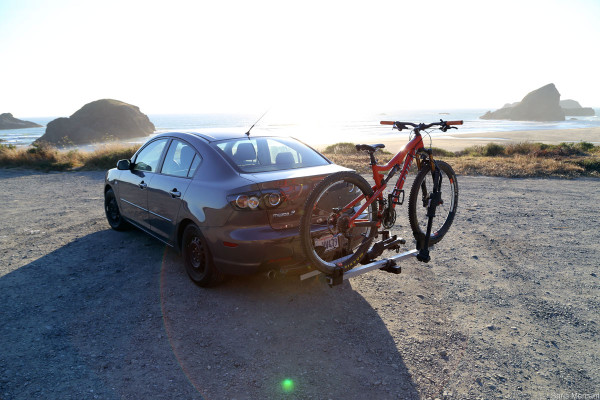
The focus of any bike review should be the bike, but in this case, I also struggled with the larger issue of women in cycling. Like no other product or brand, this bike forced me to confront those questions. It was such an emotional issue that I had to walk away from this review several times, and even after dozens of impassioned debates, I’m still unsure of where I stand on the idea of women’s specific geometries or products.
The sticking point for me is that Juliana Bicycles are just repainted Santa Cruz models and it’s sort of deceptive. I really feel like they missed a great opportunity to cater to the women’s market in a meaningful way by offering different suspension valving for lighter weights, etc. but then, I go out on a ride with a woman who rode the same model (Santa Cruz/Juliana) back-to-back, and came away from the experience feeling that the Juliana performed better. Maybe that’s the point? Maybe to get more women into cycling we need to create brands and experiences that ladies can identify with, and as the market grows, we’ll see more targeted innovations.
The moral and philosophical debates aside, the Furtado is an extremely versatile bike. The bike accompanied me from Santa Cruz to Canada and back down over the summer, and was the perfect companion on all day epics. It’s an adept climber even with the shock wide open, and it’s playful nature encourages you to go for the silly trail side bonus lines.
On rugged descents, it felt as if the rear shock could use more mid support (although it’s already sporting the largest Float spacer available), and some lighter testers felt that they couldn’t set the rebound fast enough. At 130mm of travel, the 32mm fork didn’t feel flexy, but if this were my personal rig, I would mount up a 140mm fork. This would slacken the frame out slightly, and make it even more capable.
Considering all the praise that have already been heaped on the 5010, it’s no surprise that it’s identical twin performs. So if this Juliana model gets you (or a special lady in your life) stoked about riding, it’s well worth considering. And with the introduction of the new affordable carbon models earlier this year, a complete Furtado could be had for as little as $3,599.
